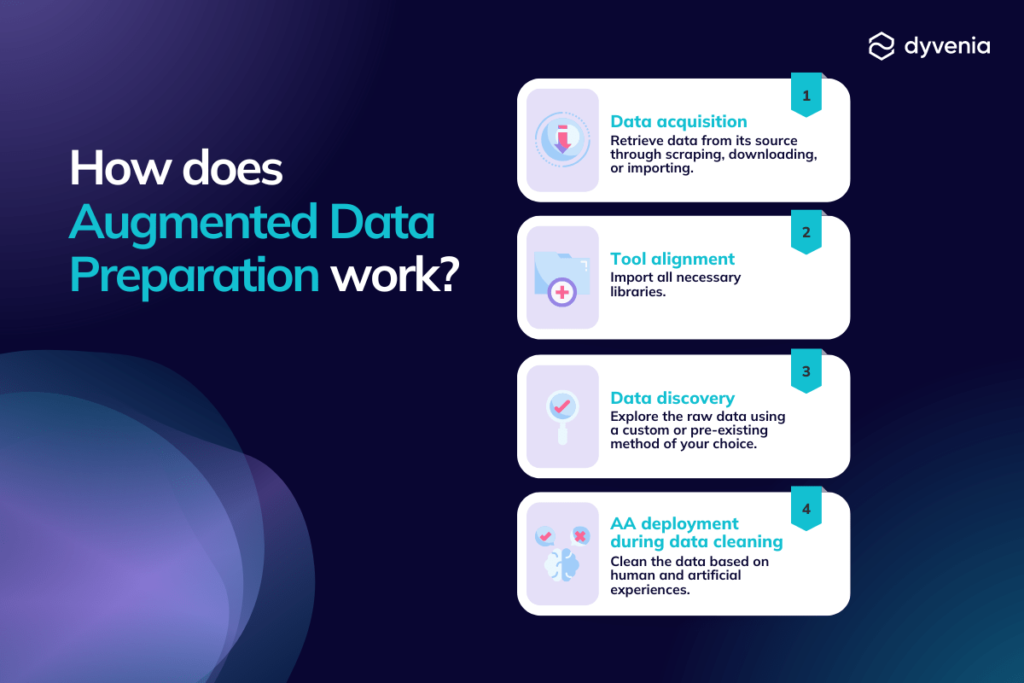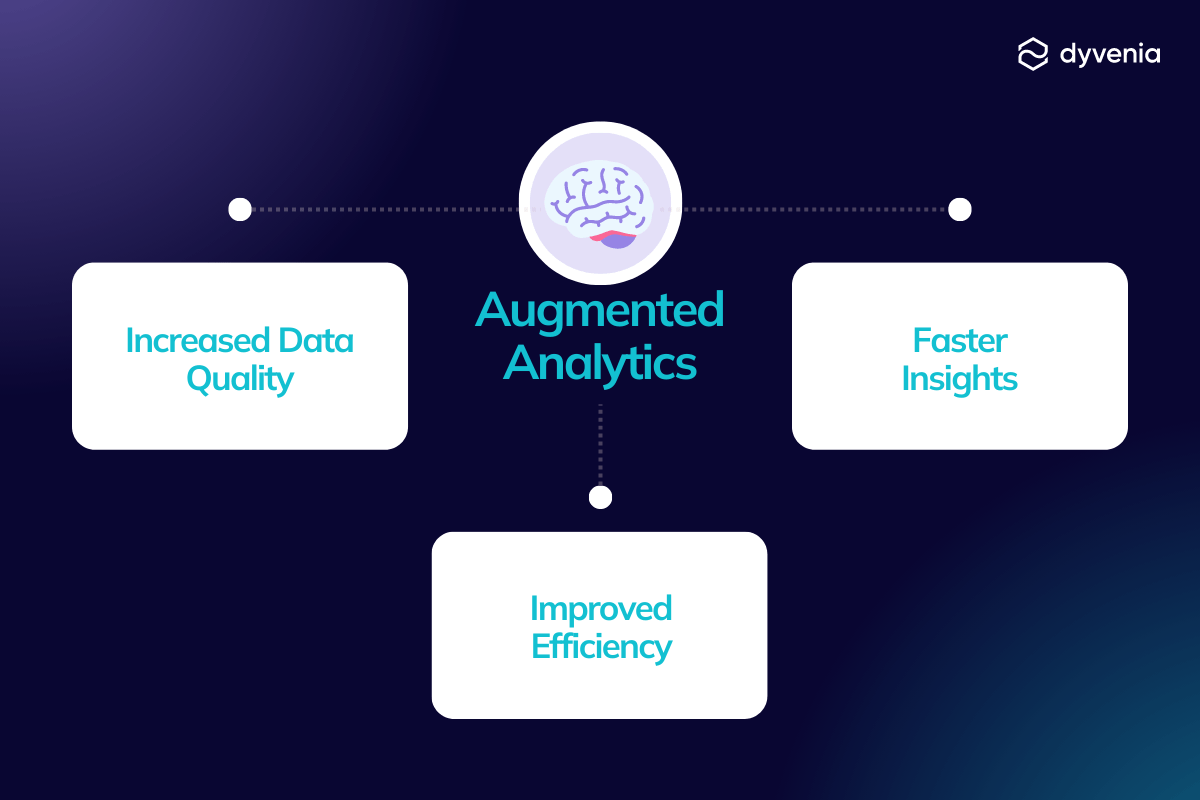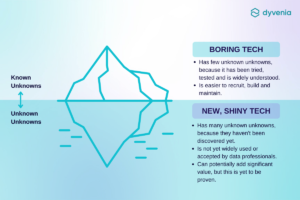With increasing expectations for decision makers to have access to insightful data and act on it immediately, familiarity with Augmented Analytics has become essential. In this article, we introduce Augmented Analytics and present a few examples to illustrate its capabilities.
As the complexity and volume of data continues to grow, companies keep implementing new Business Intelligence (BI) and analytics principles to improve their data efforts in order to stay ahead of the competition..
Augmented Analytics (AA) is one such methodology gaining in popularity: it leverages the power of Machine Learning (ML), Artificial Intelligence (AI), and Natural Language Processing (NLP) to gain critical insights faster and more precisely.
In this article, we’ll answer the following questions:
- What is Augmented Analytics, and how does it work?
- What are the benefits and challenges of Augmented Analytics?
- How is Augmented Analytics used in organizations today?
WHAT IS AUGMENTED ANALYTICS?
Augmented Analytics is a fresh concept, first defined by Gartner in 2017 as
“the use of enabling technologies such as machine learning and AI to assist with data preparation, insight generation and insight explanation to augment how people explore and analyze data in analytics and BI platforms. It also augments the expert and citizen data scientists by automating many aspects of data science, machine learning, and AI model development, management and deployment.”
In a nutshell, augmented analytics allows us to get results faster and with fewer headaches. It automates tasks which allows for quick decision-making and improved accuracy in predictions. Augmented analytics can also help non-technical users to benefit from more sophisticated tools in the data analysis process.
HOW DOES AUGMENTED ANALYTICS WORK?
Before going into the technicalities, we will point out that AA is not the same as Data Science (DS), which focuses on the correct use of technologies such as ML, AI, and others. Instead, AA uses automated algorithms and ML to augment human intelligence in the data analysis process, allowing users to easily access and analyze large volumes of text data. AA methodologies can be tailored to meet a wide range of business needs and goals.
To better clarify how Augmented Analytics works, we’ll take a detailed look at one of its possible uses: the augmented data cleaning process. By breaking down the methodology into smaller steps, we can test different approaches along the way, following an efficient and solution-oriented process.
While there are endless possibilities in which this approach might come in handy, consider a real estate company looking to better understand market trends through their rent and sales data. Using AA here would improve the quality of their rent and sales data, allowing for more effective analysis afterward.

Augmented Data Preparation consists of 4 steps: data acquisition, tool alignment, data discovery, and AA deployment during data cleaning.
It’s important to follow a systematic process in order to effectively use Augmented Analytics within a programming language such as Python.
Here is our step-by-step guide to approaching a data set such as the real estate example:
1. Data acquisition: Retrieve data from its source through scraping, downloading, or importing.
2. Tool alignment: Import all necessary libraries.
3. Data discovery: Explore the raw data using a custom or pre-existing method of your choice.
4. AA deployment during data cleaning:
Human experiences:
- Familiarize yourself with the data description to understand the raw data, its context, availability, and appropriate use.
- Remove special symbols and formatting errors.
- Review duplicates and decide on deletion.
- Eliminate any irrelevant and unnecessary data.
- Standardize and unify the data.
Artificial experiences:
- Apply ML, AI, and NLP approaches depending on business goals and needs.
- Use artificial tools to automate human experiences where possible.
- Eliminate errors.
- Handle missing values using ML.
- Use NLP to analyze language, correct grammar, convert speech to text, and to translate between languages.
- Review and compare results.
BENEFITS OF AUGMENTED ANALYTICS
By combining the capabilities of Business Intelligence and the advanced features of Artificial Intelligence, Augmented Analytics offers new opportunities for organizations seeking to bring their business processes to the next level. But how?
Augmented Analytics enables companies to increase data quality, improve efficiency, and obtain insights quickly.
- Increased data quality: automated analysis of billions of records reduces the risk of bias and the amount of errors and inaccurate information, thereby increasing the quality of strategies, plans, and tactical decisions.
- Faster insights: real-time processing streamlines the immediate flow of information to the end user, allowing them to drive business decision-making.
- Efficiency: automating repetitive tasks helps companies implement more efficient processes within the product’s life cycle, saving time and money.
USE CASES OF AUGMENTED ANALYTICS
Global powerhouses including Coca-cola, Crédit Mutuel, Ryanair, and WhatsApp have already begun incorporating Augmented Analytics into their internal operations. And the trend is growing, with leading analytical BI tools such as Power BI and Tableau also embracing this approach.
Many new cutting-edge products from innovators like AnswerRocket, The Analytics OS (Pyramid v2020), Qlik Sense, TIBCO Spotfire, QBO, and Sisy have made analytical work faster and more efficient.
Augmented Analytics is changing almost all industries. For instance, banks and other finance services have adopted this methodology to increase fraud detection and reduce risks by allowing continuous auditing and monitoring. Some marketing departments have tapped into AA to optimize campaigns and customer loyalty policies.
The automated data storytelling that AA offers is highly valued among manufacturing companies. Because the manufacturing sector is exposed to many vulnerabilities, simplifying complex information in seconds is now crucial, and implementing AI algorithms is the answer. Dashboards like those offered by us at dyvenia in Power BI showcase the data story in an easy-to-understand visual format, offering valuable insights and streamlined operations.
CHALLENGES OF AUGMENTED ANALYTICS
Although Augmented Analytics is changing the analytics and BI space and enabling companies to gain actionable insights faster than ever before, organizations should prepare for any obstacles this methodology may bring:
- Timelines: The denser the data to analyze, the more time it will take to integrate the different devices using and reporting the data.
- Interpretation: AA requires interpreting the patterns of human language and expressions into a language the computer can understand; likewise, AA needs to convert recognized patterns into actionable insights via language understood by users on an intuitive and immediate level.
- Privacy: Safety of personal data and policy compliance with both organizational and legal requirements.
IMPLEMENTING AUGMENTED ANALYTICS IN YOUR BUSINESS
The potential gains from AA are so attractive that some companies tend to jump in without a clear vision and sensible objectives. Before falling head over heels for AA, you first need to build the foundation to get the most out of it. Establishing a solid data foundation will help you:
- Integrate your applications to get a unified view of data.
- Improve data experience across the enterprise to build trust in data.
- Introduce data governance principles and policies to ensure that privacy concerns are properly addressed.
dyvenia helps organizations to build efficient, expandable, and future-proof data foundations that allow for the seamless creation of scalable AI/ML and BI projects. Seeking to harness the power of your data? Reach out to our team to see how we can support you in your data journey.
SUMMARY
Although Augmented Analytics comes with challenges, its implementation has proven to be valuable for a wide range of industries, including finance, marketing, and manufacturing. By combining BI and analytics capabilities with technologies such as AI, ML, and NLP, business decision-makers can gain critical insights faster, increase the quality of the obtained data, and significantly improve efficiency by automating redundant processes.
What is Augmented Analytics?
Augmented Analytics is a data analysis methodology that leverages Machine Learning (ML), Artificial Intelligence (AI), and Natural Language Processing (NLP) to automate data preparation, insight generation, and analysis. This process helps users, both technical and non-technical, to gain insights faster and more accurately by augmenting human intelligence with automated tools
How does Augmented Analytics differ from traditional analytics?
Traditional analytics often requires manual data preparation and analysis, whereas Augmented Analytics automates these tasks using AI and ML. It enables quicker decision-making by streamlining data cleaning, processing, and insight generation, allowing users to focus on interpretation rather than manual work.
What are the key benefits of Augmented Analytics?
Augmented Analytics increases data quality by minimizing human error, provides faster insights through real-time data processing, and improves operational efficiency by automating repetitive tasks. This allows businesses to make better, data-driven decisions more quickly and with greater accuracy.
What are some common challenges in implementing Augmented Analytics?
Key challenges include managing timelines for large datasets, ensuring accurate interpretation of complex data patterns, and addressing privacy concerns related to personal data. Businesses must also integrate different data sources effectively to fully leverage Augmented Analytics.
Which industries are adopting Augmented Analytics, and how are they benefiting?
Industries like finance, marketing, and manufacturing are heavily using Augmented Analytics. For example, banks use it to improve fraud detection, marketing teams optimize customer campaigns, and manufacturers enhance production efficiency through automated data storytelling and AI-driven insights.
Can non-technical users benefit from Augmented Analytics?
Yes, one of the key advantages of Augmented Analytics is its ability to empower non-technical users to perform sophisticated data analysis. The automation of data preparation and analysis allows users without extensive technical skills to access and interpret valuable insights.
How can organizations prepare for implementing Augmented Analytics?
Organizations should first build a strong data foundation, integrating data across applications and implementing data governance principles. This will ensure privacy compliance and foster trust in the data being used. Proper preparation will maximize the potential gains from Augmented Analytics.
Author
-

Ira is a skilled data practitioner with a background in analysis, mathematics, and software development. She holds a Bachelor's Degree in System Analysis and completed the InterMath Double Degree program, earning two Master of Science degrees—one in Applied Mathematics from Ivan Franko Lviv National University and another in Mathematical Engineering from Università degli Studi dell'Aquila. She also participated in the Erasmus+ student exchange program.
View all posts




